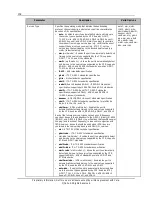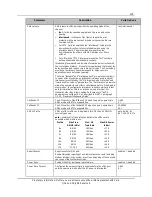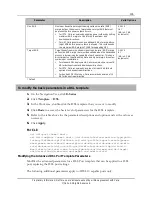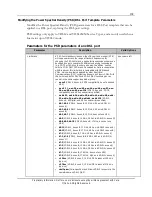
127
Proprietary Information: Not for use or disclosure except by written agreement with Calix.
© Calix. All Rights Reserved.
When is vectoring recommended?
Vectoring is recommended for environments with high levels of cross talk. Conversely,
vectoring is of little to no benefit in environments with low levels of cross talk. Just as
important, vectoring is of little benefit if the target speeds are low – less than 50Mbps. And
because vectoring is a double-ended technology, an installed base of non-vectoring capable
CPE means vectoring cannot be deployed unless the CPE is replaced.
Access Variable
Vectoring Benefit
High VDSL2 density (high cross talk)
High
Low VDSL2 density (low cross talk)
Low
50Mbps or less
Low
50-75Mbps
Moderate
Up to 100Mbps
High
Long loops (3,000+ ft, 900+meters)
Low
Short loops (<3000 ft, <900 meters)
High
Mixed ADSL2+ and VDSL2
Varies according to loop length and service mix
VDSL bonding
High
Legacy VDSL2 CPE (non-vectored)
Low
Planning Considerations when Enabling Vectoring
When planning a unit level vectoring implementation a number of considerations and
requirements are critical. The binder group (the copper cable from the DSLAM to the
subscribers) needs to be considered as shared spectrum. Transmission strength and
frequencies on both ends of the line, the DSLAM, and the modem are managed to reduce
the overall noise floor. For optimal performance, Calix recommends that all modems in a
vector group be from the same modem manufacturer, use the same model type, and run the
same firmware for a successful vectoring implementation. This ensures that all members of
the vectoring group behave in the same manner when the vectoring group is trained.
Please refer to the section titled "Unit Level Vectoring" in the
Calix E7 Platform Release Product
Planning Guide
for more information about planning considerations when enabling vectoring.
Creating a VDSL2 Vectoring Group
This topic describes how to create a DSL Vector Group. Only one vector group may be
configured per VDSL2 line card or VDSL2 unit.
E-Series VDSL2 products support bonded VDSL2 lines in a vectoring group as they
interoperate with all chipsets for VDSL2 bonded vectoring capable CPE (Broadcom, Ikanos,
Lantiq). Bonded vectored performance restores the bandwidth impacted by cross talk in a
binder group and extends the reach of 100Mbps bonded VDSL2 modems. Bonded vectored
ports can deliver 100Mbps downstream performance on service loops up to 4,000’. For
additional information on Bonded Vectoring CPE interoperability please see the VDSL2
CPE Interoperability Customer Advisory Bulletin.
















































